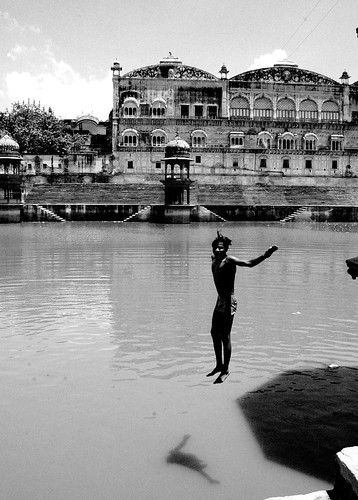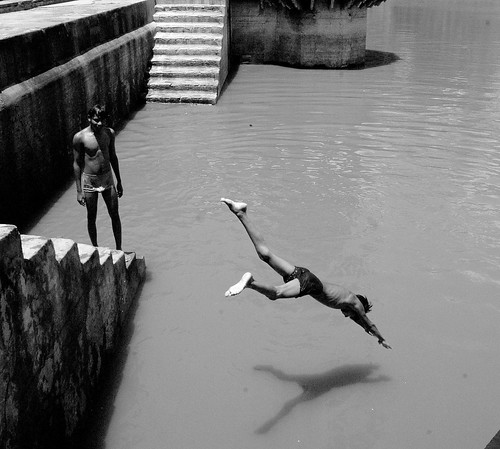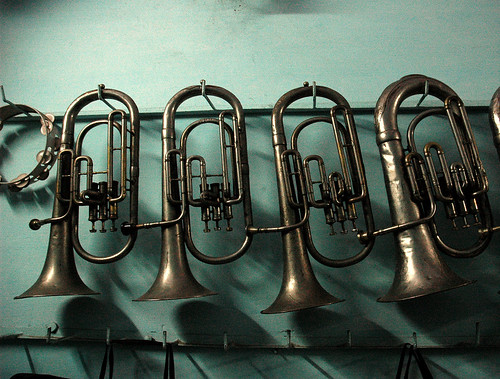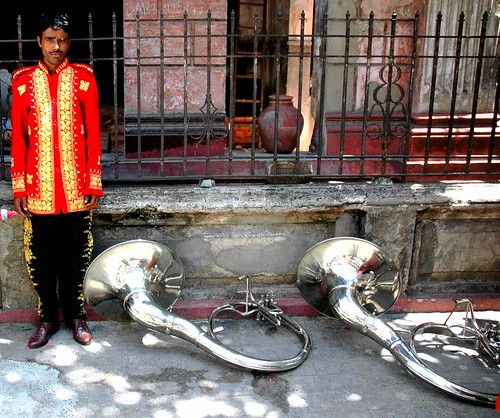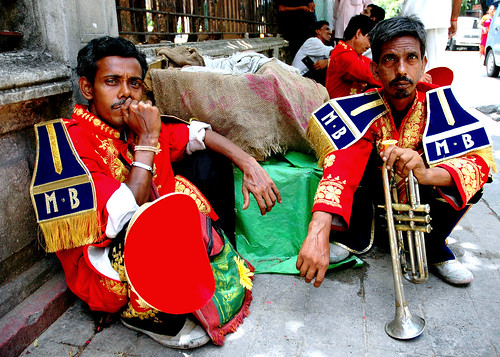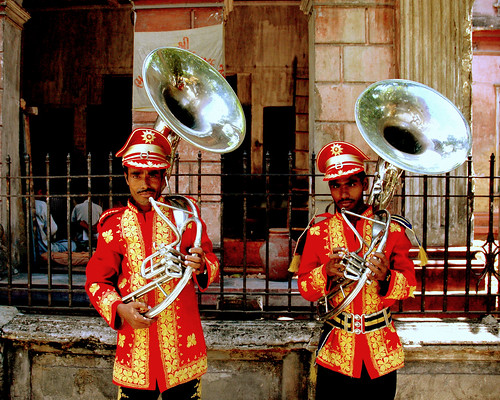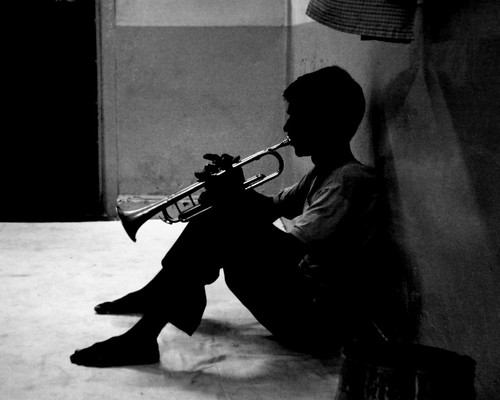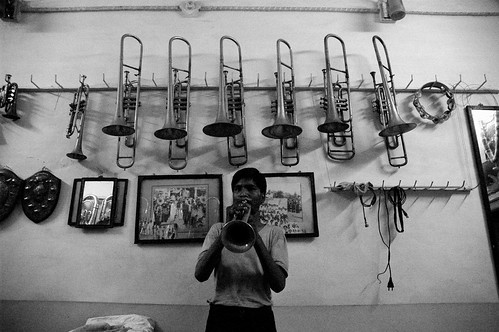I turned to photography because I’m a lazy writer. And so it should be immediately noted that the imagery I typically sew together is meticulous, structurally obsessive, random and doesn’t necessarily concern itself with any sort of palpable beauty. I shoot photographs because I want to tell stories, just like some of my fellow bloggers do with words. While some may find that difficult to do in one frame, it’s all the more rewarding (for me, of course) when all the pieces fit together and transcend the petty limitations of four corners.
Here’s the story of how it all began. I started this blog some 3 1/2 years ago, as a bored seventeen year old, after I somehow stumbled on to a blog, then owned by Pyra labs. For the first two years amazingly I didn’t quiet know what to do with the blog so I filled the pages with something that read like del.icio.us meets livejournal. It was only then that I discovered flickr and photography – probably about the same time. Now non-structured grammatically incorrect gibberish doesn’t find many takers on the blogosphere so I had to restructure my blog to make it more accessible; after all what’s the use of blogging if there is no one at the end reading it. Pictures are a good substitute - firstly, I can by-pass all the inadequacies I have with words and spelling and secondly, if all else fails I’ll get a comment,” Nice pictures, Akshay”.
“Tell stories with photographs” – that’s been my objective for the last 18 months or so and hopefully that’s come across through my blog.
Another advantage of populating your blog with pictures is that come year end you know exactly what you’ve been up to throughout the year. Let us take a look.
January
![Bhajji walli - [Green Grocer - Female]](http://farm1.static.flickr.com/37/83346910_4fbb4b92ef.jpg)
A sabjiwalli at Byculla market, which was Bombay's muncipal vegetable market but then Bombay became Mumbai and they shifted the market wisely to Navi Mumbai [Vashi].You can still find the freshest and cheapest vegetables at Byculla. A picture I took roaming the streets of Byculla.
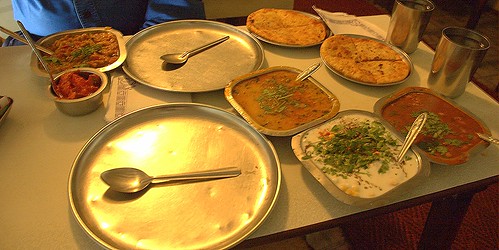
Top left: Bhaigan ka bhurta [mashed brinjal cooked on an open flame],Bottom Right: Rajma ,Cente: Dal fry, Raita and an Aloo [potato] and Mulli[radish] Paratha [stuffed bread]. Not in picture: 2 Salted Lassis and hot pulkas/rotis. All part of a meal I enjoyed at Crystals, go read about it.

A fortune telling robot tells does more than tell me my future.
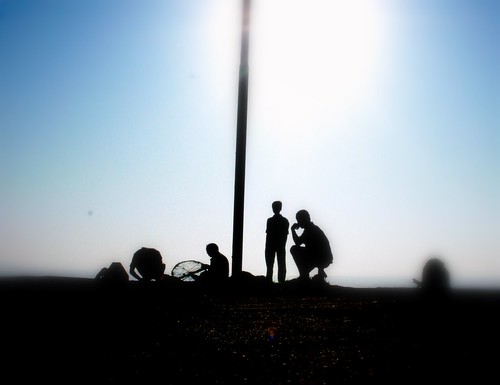
Fishermen on Sewri Jetty on a Sunday Morning. I place the camera on the concrete for this shot, directly at the Sun.
I love playing word association and if you shout Sewree at me the first words that would come into my mind are 'trucks' & 'pollution'. Sewri is not place I especially like. The question then arises why am I on the Harbour Line train bound for Sewree ? The answer to that is - Flamingos among other things.
February
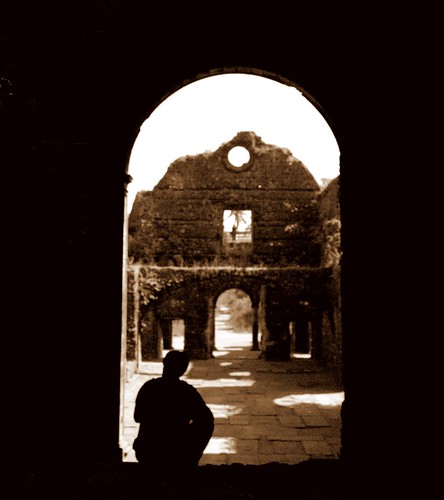
Silhouette of Hugo at the ruined Alter of the Franciscan church of Santo Antonio taken in Bassein, Vasai which possibly is Mumbai's only piece of the Renaissance.
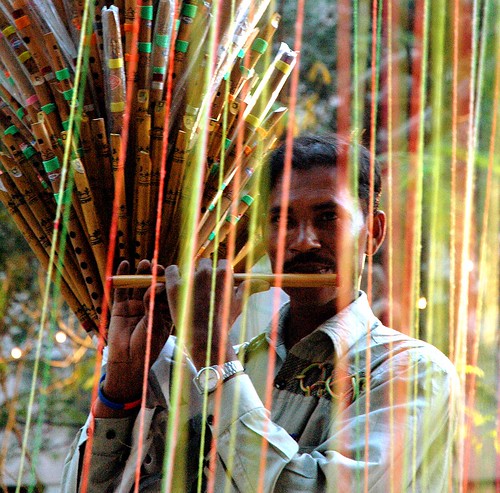
Go to Gateway of India or any tourist attraction in Indian and these basuri-wallahs [flute players] are a dime a dozen but what made me take this picture was the visual art in the forefront - gives it a cool effect. By the way the basuri wallah picture asked me to mention his name which is ‘Haidut’ incidently. A picture I took for a series of post I did on the Kala Ghoda Art Festival for the KGAF blog.
March
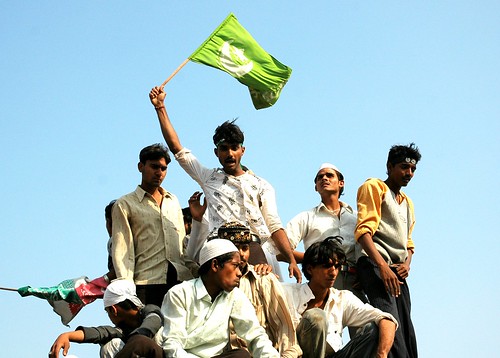
Shouting "Jeoorge Bussh Murdabad," breaking into "Gulli Gulli meh shoor hai Jeoorge Bussh Oil Chor hai" at the Anti-Bush protests in Azad Maidan.
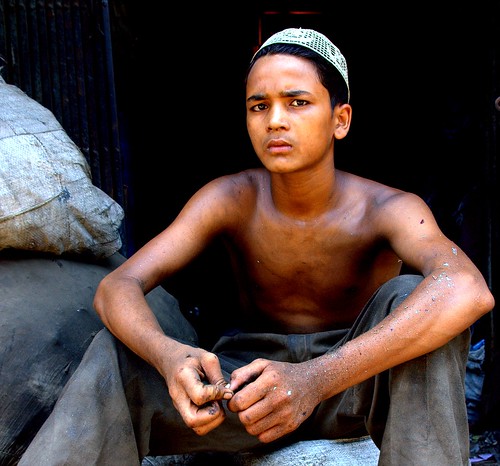
Zareeq, works cutting old discarded plastic on a rusting cutting machine in Dharavi's 13th Compound.
It is hard to find an idle soul in Dharavi, it is a cesspool of activity, buzzing with energy and ingenuity, always fighting, always dreaming and looking to the future. It is then that I realised that the only idle soul in Dharavi was me.
April
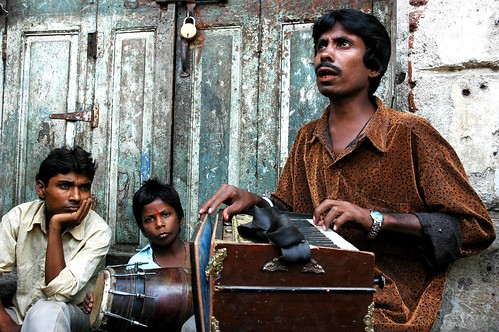
"Dam-damachak", a road side Busker in the Old Pune quater of Budhwar Peth.
Old Pune to me is where time stops but the traffic does not, is where the people return your smiles and the decaying wooden facades are not just gateways but time machines into an India of the past. Sadly heritage structures are the number one casualty in the growing concretization of the city. Many such remnants of the Pune's rich past are slowly disappearing.
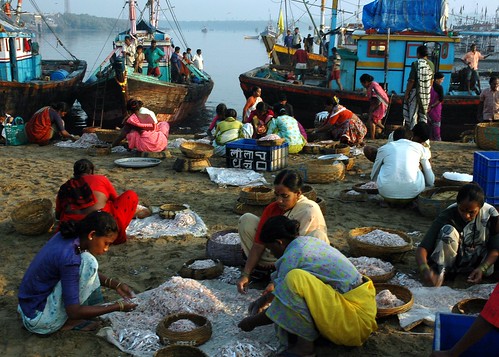
A Versova Morning.
May
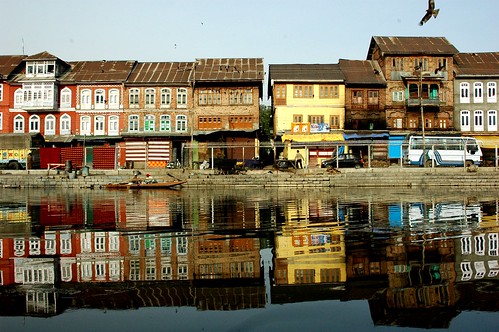
Srinagar Relfects on the Dal Lake.
This is what our driver. Shakeel must have meant when he told us, "Kal dekhna, aap Jannat mai uthen gai" [Tomorrow morning you will wake up in paradise] . This was not the Srinagar we read about in the papers or see on the news channels. This is not the Srinagar of curfews and bandhs, of grenade attacks, of bomb blasts, of shoot outs, of encounters, of security checkpoints and bunkers, of armed men in uniform, of abandoned buildings, of sniffer dogs, of military convoys, of lurking fear and of 6000 missing young men. Sadly natural beauty is indifferent to the human suffering.
Posts on Kashmir here, here and here
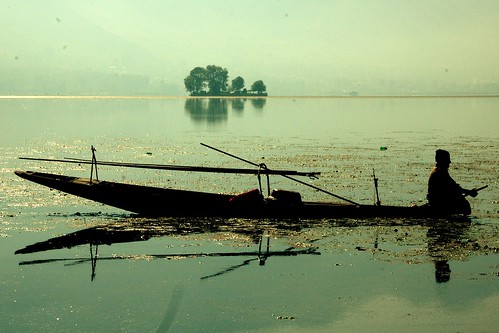
Fisherman on the Dal

Mumbaiya Guide to beat the Summer.
June
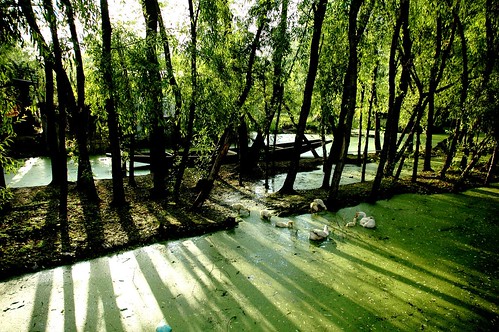
Floating Gardens of the Nagin
The Nagin lake is a peaceful cleaner smaller cousin of the Dall Lake in Srinagar is an unforgettable experience - is not only extremely relaxing but offers a close look at the almost amphibian life of the Hanjis, the boat people.
July

Foaming Tides in Orissa
Even if Puri was not a temple town steeped in history it would have survived for its stretches of golden sand, crusty waves lashing the shore and an unblemished skyline that greets you warmly. The beach, which is lined with local women selling an array of crystal and shell
jewellery and fishermen displaying their catch of shiny fish and glistening prawns, is a whirl of activity. The conical hatted local young men who double as lifeguards are as much a part of the beach as the surf and the sand and are a safe bet against the treacherous undercurrent.
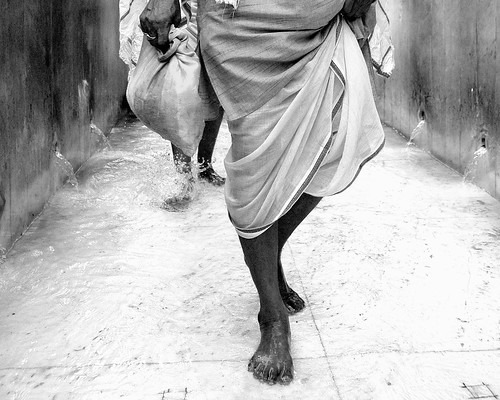
The Gods Roll On
The grand spectacle of the chariot festival of the god Jagannath of Orissa has been played out on the streets of this ancient seaside town of Puri for more than six hundred years. Each summer hundreds of thousands of devotees travel here to offer darshan, a ritual gazing, before the three grand chariots, the largest bearing the
timber image of Jagannath, and to labour on the thigh-thick ropes that pull the rodigious vehicles, through the streets of Puri.
August
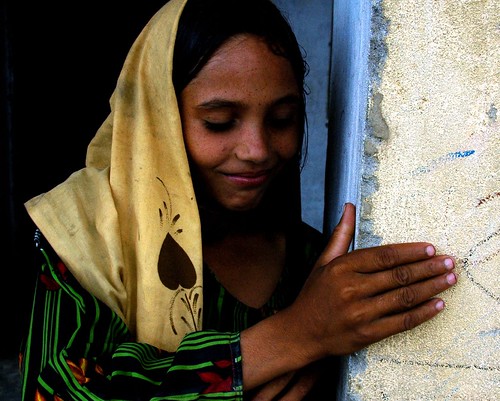
Saira Likes to Draw, part of series of posts I did while volunteering at a girls Taleemshala in the Mevat Block of Alwar District Rajasthan.
Take Saira for example. Saira likes to draw, an activity which her teacher encourages. Give Saira a sketching pad and a set of crayons and her talent will soon become apparent to you. She fills up the virgin pages of her note book with scenes of everyday Chandolli life. Here is a pencil drawing of a buffalo soaking itself in a pond in front of the school - it was all very recognizable - and here is a picture of turbaned man chasing off a donkey (or a dog I'm not quite sure). And on this page is a picture of a shop, a small baniya ki dukaan, with things in front of it which could have been a sack of spices or perhaps people sitting down one could not tell - but as I said before they are excellent sketches and deserved their status of being pinned up on the walls of the classroom.
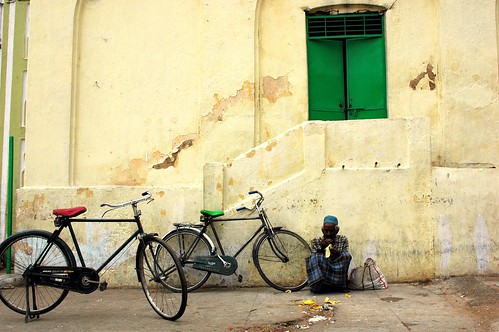
Relax ! Have A Char Minar
As our auto-rickshaw speeds across Hyderabad encountering only scanty Sunday morning traffic, the skyline changes slowly from ugly rectangular concrete blocks to that of white domes and minarets. The city sprawls among the smoothly sculptured rocks of the deccan plateau and straddles the Musi River. The change is only complete when you cross the Musi and you find yourself in one of the best bazaars in Asia, Hyderabad's ancient commercial center. At its heart is the Char Minar, a magnificent 400-year-old granite arch with four soaring minarets and wide arches opening out on all four directions.
September
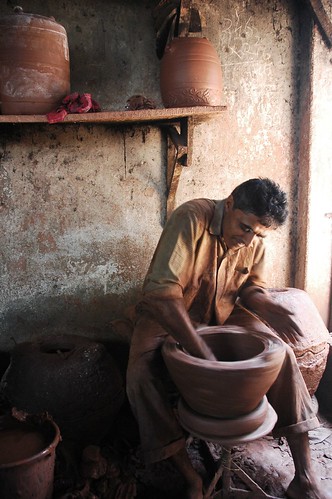
A Potter of Kumbharwada, Dharavi.
Kumbharwada, where a community of potters has been staying for many generations, is emblematic of the pressures on livelihood in Dharavi,Mumbai. The Kumbhars, a community of potters from Saurashtra in Gujarat, were first relocated here from South Bombay in 1932 (after two previous relocations, always to the northern edge of the city as it was defined at the time). They found a swampy, uninhabited district with plenty of space for their kilns and houses
October
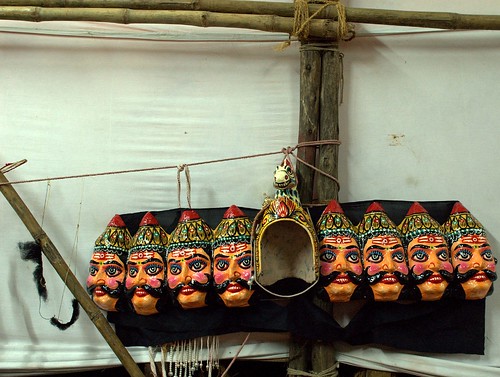
Back Stage with the gods, Ram Lila at Cross Maidan.
Thirty minutes to "curtain rise" and Hanuman is still to attach his eyebrows and his tail has gone missing since the last performance; Ram can't find his right jhumka, Sita is straightening her [his actually as all Ramlila artists are men] blouse; Laxman is fiddling with Ram's bow and Ravana still not ready can be seen alternating between sips of a cup of chai and a beedi he borrowed from Sita. In other words it was all a messed up surreal dream exactly like the one I had about Jesus riding a Harley.
Phew !!! That pretty much concludes my year in Pictures. It's been an eventful year and I hope 2007 is as eventful. Happy Holidays and Thank you
for reading.
Here’s the story of how it all began. I started this blog some 3 1/2 years ago, as a bored seventeen year old, after I somehow stumbled on to a blog, then owned by Pyra labs. For the first two years amazingly I didn’t quiet know what to do with the blog so I filled the pages with something that read like del.icio.us meets livejournal. It was only then that I discovered flickr and photography – probably about the same time. Now non-structured grammatically incorrect gibberish doesn’t find many takers on the blogosphere so I had to restructure my blog to make it more accessible; after all what’s the use of blogging if there is no one at the end reading it. Pictures are a good substitute - firstly, I can by-pass all the inadequacies I have with words and spelling and secondly, if all else fails I’ll get a comment,” Nice pictures, Akshay”.
“Tell stories with photographs” – that’s been my objective for the last 18 months or so and hopefully that’s come across through my blog.
Another advantage of populating your blog with pictures is that come year end you know exactly what you’ve been up to throughout the year. Let us take a look.
January
![Bhajji walli - [Green Grocer - Female]](http://farm1.static.flickr.com/37/83346910_4fbb4b92ef.jpg)
A sabjiwalli at Byculla market, which was Bombay's muncipal vegetable market but then Bombay became Mumbai and they shifted the market wisely to Navi Mumbai [Vashi].You can still find the freshest and cheapest vegetables at Byculla. A picture I took roaming the streets of Byculla.

Top left: Bhaigan ka bhurta [mashed brinjal cooked on an open flame],Bottom Right: Rajma ,Cente: Dal fry, Raita and an Aloo [potato] and Mulli[radish] Paratha [stuffed bread]. Not in picture: 2 Salted Lassis and hot pulkas/rotis. All part of a meal I enjoyed at Crystals, go read about it.

A fortune telling robot tells does more than tell me my future.

Fishermen on Sewri Jetty on a Sunday Morning. I place the camera on the concrete for this shot, directly at the Sun.
I love playing word association and if you shout Sewree at me the first words that would come into my mind are 'trucks' & 'pollution'. Sewri is not place I especially like. The question then arises why am I on the Harbour Line train bound for Sewree ? The answer to that is - Flamingos among other things.
February

Silhouette of Hugo at the ruined Alter of the Franciscan church of Santo Antonio taken in Bassein, Vasai which possibly is Mumbai's only piece of the Renaissance.

Go to Gateway of India or any tourist attraction in Indian and these basuri-wallahs [flute players] are a dime a dozen but what made me take this picture was the visual art in the forefront - gives it a cool effect. By the way the basuri wallah picture asked me to mention his name which is ‘Haidut’ incidently. A picture I took for a series of post I did on the Kala Ghoda Art Festival for the KGAF blog.
March

Shouting "Jeoorge Bussh Murdabad," breaking into "Gulli Gulli meh shoor hai Jeoorge Bussh Oil Chor hai" at the Anti-Bush protests in Azad Maidan.

Zareeq, works cutting old discarded plastic on a rusting cutting machine in Dharavi's 13th Compound.
It is hard to find an idle soul in Dharavi, it is a cesspool of activity, buzzing with energy and ingenuity, always fighting, always dreaming and looking to the future. It is then that I realised that the only idle soul in Dharavi was me.
April

"Dam-damachak", a road side Busker in the Old Pune quater of Budhwar Peth.
Old Pune to me is where time stops but the traffic does not, is where the people return your smiles and the decaying wooden facades are not just gateways but time machines into an India of the past. Sadly heritage structures are the number one casualty in the growing concretization of the city. Many such remnants of the Pune's rich past are slowly disappearing.

A Versova Morning.
May

Srinagar Relfects on the Dal Lake.
This is what our driver. Shakeel must have meant when he told us, "Kal dekhna, aap Jannat mai uthen gai" [Tomorrow morning you will wake up in paradise] . This was not the Srinagar we read about in the papers or see on the news channels. This is not the Srinagar of curfews and bandhs, of grenade attacks, of bomb blasts, of shoot outs, of encounters, of security checkpoints and bunkers, of armed men in uniform, of abandoned buildings, of sniffer dogs, of military convoys, of lurking fear and of 6000 missing young men. Sadly natural beauty is indifferent to the human suffering.
Posts on Kashmir here, here and here

Fisherman on the Dal

Mumbaiya Guide to beat the Summer.
June

Floating Gardens of the Nagin
The Nagin lake is a peaceful cleaner smaller cousin of the Dall Lake in Srinagar is an unforgettable experience - is not only extremely relaxing but offers a close look at the almost amphibian life of the Hanjis, the boat people.
July

Foaming Tides in Orissa
Even if Puri was not a temple town steeped in history it would have survived for its stretches of golden sand, crusty waves lashing the shore and an unblemished skyline that greets you warmly. The beach, which is lined with local women selling an array of crystal and shell
jewellery and fishermen displaying their catch of shiny fish and glistening prawns, is a whirl of activity. The conical hatted local young men who double as lifeguards are as much a part of the beach as the surf and the sand and are a safe bet against the treacherous undercurrent.

The Gods Roll On
The grand spectacle of the chariot festival of the god Jagannath of Orissa has been played out on the streets of this ancient seaside town of Puri for more than six hundred years. Each summer hundreds of thousands of devotees travel here to offer darshan, a ritual gazing, before the three grand chariots, the largest bearing the
timber image of Jagannath, and to labour on the thigh-thick ropes that pull the rodigious vehicles, through the streets of Puri.
August

Saira Likes to Draw, part of series of posts I did while volunteering at a girls Taleemshala in the Mevat Block of Alwar District Rajasthan.
Take Saira for example. Saira likes to draw, an activity which her teacher encourages. Give Saira a sketching pad and a set of crayons and her talent will soon become apparent to you. She fills up the virgin pages of her note book with scenes of everyday Chandolli life. Here is a pencil drawing of a buffalo soaking itself in a pond in front of the school - it was all very recognizable - and here is a picture of turbaned man chasing off a donkey (or a dog I'm not quite sure). And on this page is a picture of a shop, a small baniya ki dukaan, with things in front of it which could have been a sack of spices or perhaps people sitting down one could not tell - but as I said before they are excellent sketches and deserved their status of being pinned up on the walls of the classroom.

Relax ! Have A Char Minar
As our auto-rickshaw speeds across Hyderabad encountering only scanty Sunday morning traffic, the skyline changes slowly from ugly rectangular concrete blocks to that of white domes and minarets. The city sprawls among the smoothly sculptured rocks of the deccan plateau and straddles the Musi River. The change is only complete when you cross the Musi and you find yourself in one of the best bazaars in Asia, Hyderabad's ancient commercial center. At its heart is the Char Minar, a magnificent 400-year-old granite arch with four soaring minarets and wide arches opening out on all four directions.
September

A Potter of Kumbharwada, Dharavi.
Kumbharwada, where a community of potters has been staying for many generations, is emblematic of the pressures on livelihood in Dharavi,Mumbai. The Kumbhars, a community of potters from Saurashtra in Gujarat, were first relocated here from South Bombay in 1932 (after two previous relocations, always to the northern edge of the city as it was defined at the time). They found a swampy, uninhabited district with plenty of space for their kilns and houses
October

Back Stage with the gods, Ram Lila at Cross Maidan.
Thirty minutes to "curtain rise" and Hanuman is still to attach his eyebrows and his tail has gone missing since the last performance; Ram can't find his right jhumka, Sita is straightening her [his actually as all Ramlila artists are men] blouse; Laxman is fiddling with Ram's bow and Ravana still not ready can be seen alternating between sips of a cup of chai and a beedi he borrowed from Sita. In other words it was all a messed up surreal dream exactly like the one I had about Jesus riding a Harley.
Phew !!! That pretty much concludes my year in Pictures. It's been an eventful year and I hope 2007 is as eventful. Happy Holidays and Thank you
for reading.

